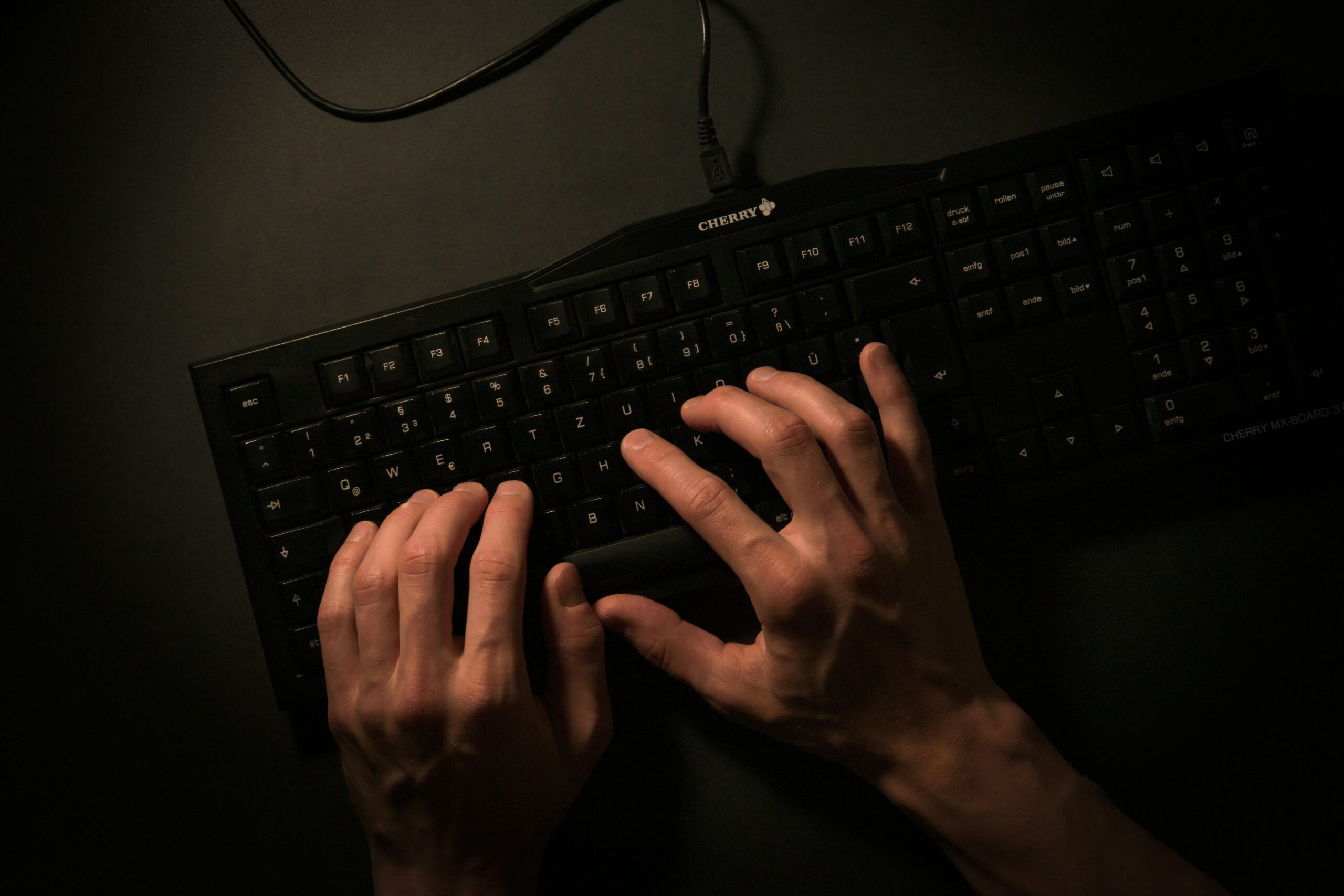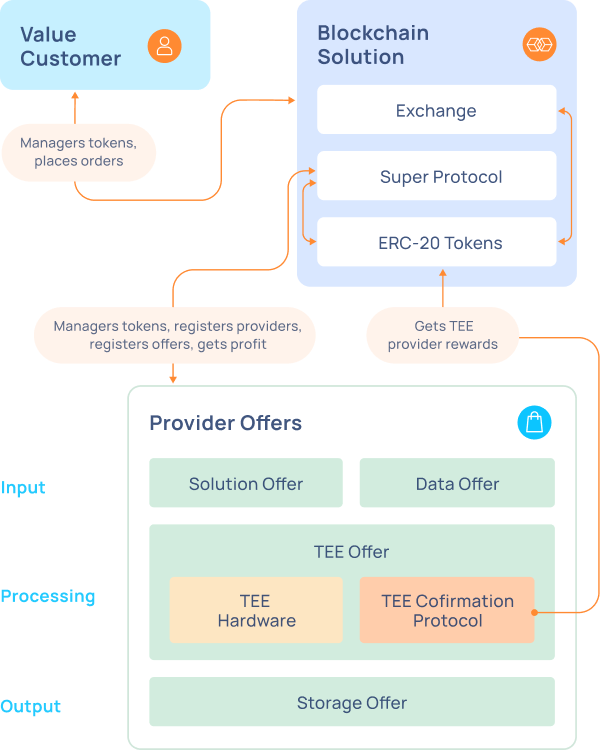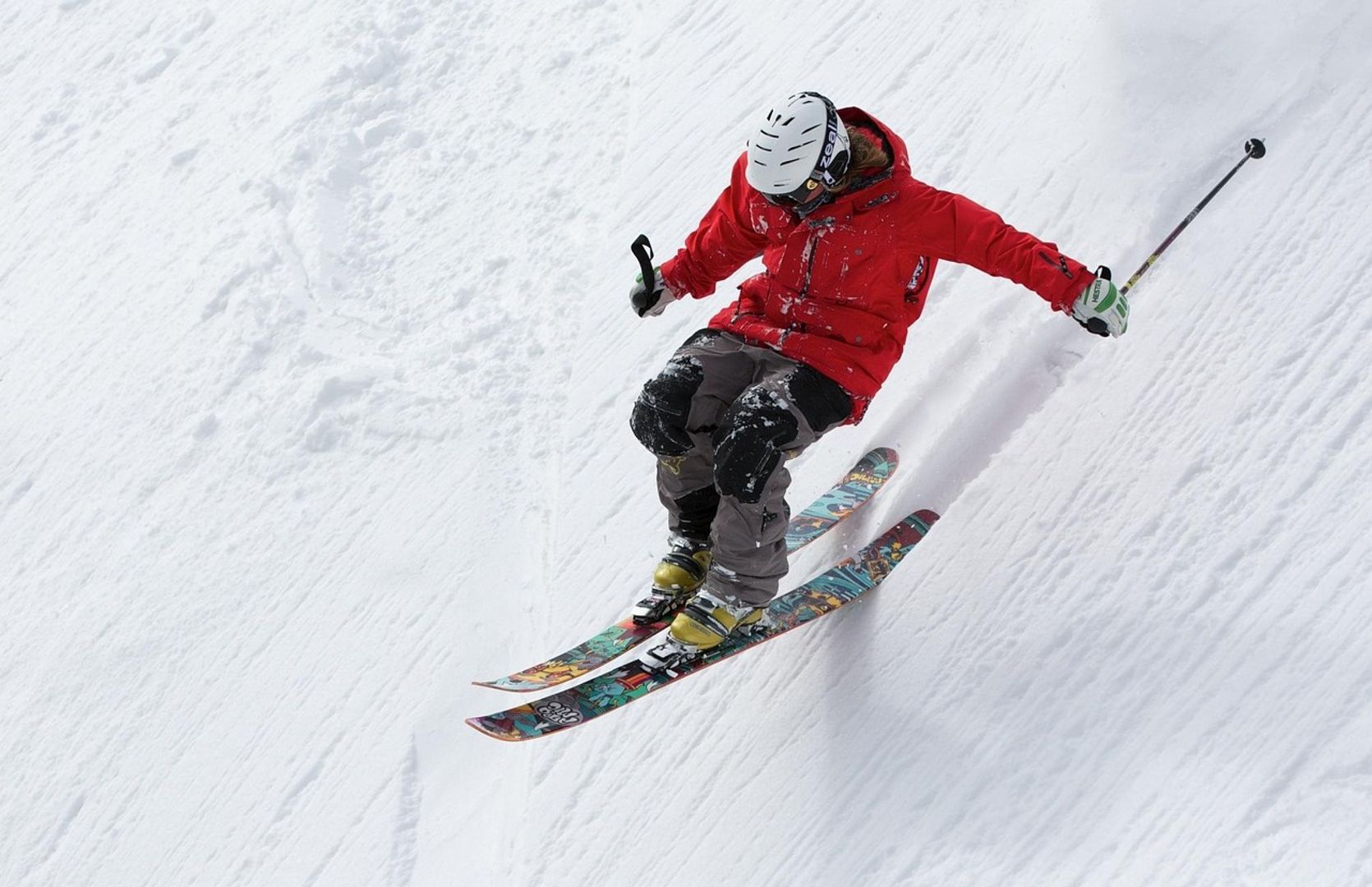Uncategorized
How Web3 Is Disrupting AI Cloud Computing

Centralized data networks, ones that are owned and/or managed by a single entity, have been structurally broken for years. Why? Single points of failure. If one entity (or even a few) has access to a database, then there is only one “point” to compromise in order to gain full access. This is a serious problem for networks holding sensitive data like customer information, government files, and financial records, and those with control of infrastructure like power grids.
Billions of digital records were stolen in 2024 alone, causing an estimated $10 trillion in damages! Notable breaches include nearly all of AT&T’s customer information and call logs, half of America’s personal health information, 700 million end-user records from companies using Snowflake, 10 billion unique passwords stored on RockYou24, and Social Security records for 300 million Americans.

Source: Statista, 2024
This is not just a private sector issue — governments and crucial national infrastructure also rely on centralized networks. Notable recent breaches include records on 22 million Americans stolen from the U.S. Office of Personnel Management, sensitive government communications from multiple U.S. federal agencies, personal biometric data on 1.1 billion Indian citizens, and the ongoing Chinese infiltration of several U.S. internet service providers.
Although hundreds of billions of dollars are spent each year on cyber security, data breaches are getting larger and happening more frequently. It’s become clear that incremental products cannot fix these network vulnerabilities — the infrastructure must be completely rearchitected.

Source: market.us, 2024
AI magnifies the issue
Recent advancements in generative AI have made it easier to automate everyday tasks and enhance work productivity. But the most useful and valuable AI applications require context, i.e. access to sensitive user health, financial, and personal information. Because these AI models also require massive computing power, they largely can’t run on consumer devices (computer, mobile), and instead must access public cloud networks, like AWS, to process more complex inference requests. Given the serious limitations inherent in centralized networks illustrated earlier, the inability to securely connect sensitive user data with cloud AI has become a significant hurdle for adoption.
Even Apple pointed this out during their announcement for Apple Intelligence earlier this year, stating the need to be able to enlist help from larger, more complex models in the cloud and how the traditional cloud model isn’t viable anymore.
They name three specific reasons:
Privacy and security verification: Providers’ claims, like not logging user data, often lack transparency and enforcement. Service updates or infrastructure troubleshooting can inadvertently log sensitive data.
Runtime lacks transparency: Providers rarely disclose software details, and users cannot verify if the service runs unmodified or detect changes, even with open-source tools.
Single point of failure: Administrators require high-level access for maintenance, risking accidental data exposure or abuse by attackers targeting these privileged interfaces.
Fortunately, Web3 cloud platforms offer the perfect solution.
Blockchain-Orchestrated Confidential Cloud (BOCC)
BOCC networks are like AWS — except built completely on confidential hardware and governed by smart contracts. Though still early days, this infrastructure has been in development for years and is finally starting to onboard Web3 projects and Web2 enterprise customers. The best example of this architecture is Super Protocol, an off-chain enterprise-grade cloud platform managed completely by on-chain smart contracts and built on trustless execution environments (TEEs). These are secure hardware enclaves that keep code and data verifiably confidential and secure.

Source: Super Protocol
The implications of this technology address all of Apple’s concerns noted earlier:
Privacy and security verification: With public smart contracts orchestrating the network, users can verify whether user data was transported and used as promised.
Workload and program transparency: The network also verifies the work done within the confidential TEEs, cryptographically proving the correct hardware, data, and software were used, and that the output wasn’t tampered with. This information is also submitted on-chain for all to audit.
Single point of failure: Network resources (data, software, hardware) are only accessible by the owner’s private key. Therefore, even if one user is compromised, only that user’s resources are at risk.
While cloud AI represents an enormous opportunity for Web3 to disrupt, BOCCs can be applied to any type of centralized data network (power grid, digital voting infrastructure, military IT, etc.), to provide superior and verifiable privacy and security, without sacrificing performance or latency. Our digital infrastructure has never been more vulnerable, but blockchain-orchestration can fix it.
Uncategorized
Bitcoin Faces Risk of Pullback to $100K as Momentum Indicator Diverges Bearishly: Technical Analysis

This is a daily technical analysis by CoinDesk analyst and Chartered Market Technician Omkar Godbole.
Bitcoin’s BTC bull run has stalled, with emerging technical signals pointing to a possible price pullback.
The leading cryptocurrency by market value traded near $108,000 at press time, probing the bullish trendline, characterizing the sharp rise from $75K to record highs over $110K, TradingView data show.
There has been little bullish action in the past 24 hours despite reports that the Trump family media company plans to raise $3b billion to buy cryptocurrencies such as bitcoin.
A key momentum indicator called the 30-day rate of change (ROC), which measures the percentage increase or decrease in bitcoin’s price over the past month, has chalked out a «bearish divergence.»
The bearish pattern happens when an asset’s price rises, but momentum indicators like the 30-day rate of change (ROC) fail to confirm the same, hinting at potential weakness and price correction.

Although bitcoin remains within a bullish upward channel, the 30-day ROC is forming lower highs, signaling a bearish divergence and weakening momentum.
Additionally, the daily chart moving average convergence divergence (MACD) histogram, an indicator widely used to gauge trend strength and changes, has flipped negative, indicating a bearish shift in momentum.
All this means that BTC could dive out of the bullish ascending channel, potentially revisiting the major psychological resistance-turned-support at $100,000.
The broader outlook remains constructive, consistent with the recent golden cross of the 50- and 200-day simple moving averages (SMAs).
Uncategorized
Asia Morning Briefing: Thai Banks May Soon Hold Crypto, SCB10X CEO Signals Sandbox Push

Good Morning, Asia. Here’s what’s making news in the markets:
Welcome to Asia Morning Briefing, a daily summary of top stories during U.S. hours and an overview of market moves and analysis. For a detailed overview of U.S. markets, see CoinDesk’s Crypto Daybook Americas.
Uniswap’s UNI token surged from $6.00 to $6.65 over the past 24 hours, pushing the token up 5%, while the broader market gauge CoinDesk20 Index fell 1.8% in the last 24 hours. This momentum coincides with Uniswap recording its highest monthly transaction volume since February, processing over $73 billion in trades and generating more than $380 million in revenue this year, as institutional interest grows and a notable whale re-entered the market by acquiring nearly $4 million worth of UNI.

SCB10X’s New CEO Sees US-Asia Crypto Dealflow, AI Opportunities
Kaweewut Temphuwapat, the new CEO of SCB10X, the venture arm of Thailand’s SCB bank, sees significant opportunities emerging at the intersection of AI, crypto, and Web3. «We definitely [are] going more on AI and also crypto and AI plus crypto,» Temphuwapat told CoinDesk, highlighting these hybrid investments as firmly «under our radar.»
He predicts clearer crypto regulation in the U.S. will fuel increased deal flow into resilient Asian markets, noting SCB10X’s early success investing in Ripple: «We are an early investor in Ripple of 10 years ago… we’ve used that technology for the last five to six years in our SCB App.»
Temphuwapat praised Thailand’s proactive and innovative regulators, highlighting the country’s robust payments infrastructure. He expects Thai banks, including SCB, could soon directly hold crypto tokens on their balance sheets, initially through regulatory sandboxes: «The intention is there… they allow us to do [it] in a small scale.»
Trader James Wynn Shifts From Billion-Dollar Bitcoin Bets to Memecoins, Goes Long Pepe
Pseudonymous trader «James Wynn,» known for high-stakes crypto bets on decentralized platform Hyperliquid, has shifted focus from billion-dollar bitcoin positions to memecoins, recently placing a leveraged $1 million bet on Pepe (PEPE), CoinDesk reported earlier.
Previously, Wynn closed a massive $1.2 billion bitcoin long position at a $17.5 million loss, before pivoting to a $1 billion short position at 40x leverage, effectively wagering their entire $50 million wallet balance on bitcoin’s downside. That short briefly netted Wynn about $3 million in profit before closing, marking one of the largest trades ever executed fully on-chain.
Wynn announced stepping back from perpetual trading after securing a cumulative profit of $25 million, earned from an initial investment of just over $3 million. The trader’s latest high-leverage PEPE position has already gained $500,000 amid a nearly 6% rise in the memecoin’s value.
Strategy Buys Another 4,020 Bitcoin for $427M, Total Holdings Surpass 580K BTC
Strategy (MSTR), the largest corporate holder of bitcoin, purchased an additional 4,020 BTC between May 19 and May 25 for roughly $427 million, bringing its total holdings to 580,250 BTC, CoinDesk previously reported. The acquisition was funded through three separate at-the-market equity programs, including sales of common and preferred stock totaling approximately $427 million.
These latest bitcoin purchases were executed at an average price of $106,237 per coin, pushing Strategy’s total investment in bitcoin to over $40.6 billion, at an average cost basis of $69,979 per coin. The acquisitions reflect the company’s ongoing commitment to expanding its sizable bitcoin holdings through regular capital raises and share issuances.
Market Movements:
- BTC: Bitcoin holds steady near record levels around $109,000, consolidating gains despite tariff-induced volatility, as long-term investors continue accumulating amid macroeconomic uncertainty.
- ETH: Ethereum maintains resilience above $2,500 amid volatility and cautious whale behavior, supported by continued institutional inflows into spot ETH ETFs.
- Gold: Gold dips slightly on tariff delay but stays above $3,310 as deficit concerns fuel bullish outlook.
- Hang Seng: Hong Kong’s Hang Seng opened lower, trading above 23,304, led by tech losses, including Meituan’s 4.9% decline.
- Nikkei: Japan’s Nikkei 225 dipped 0.13% Tuesday morning as markets assessed Trump’s tariff delay.
- S&P 500: Closed for Memorial Day.
Elsewhere in Crypto…
Uncategorized
Bitlayer Joins Forces With Antpool, F2Pool, and SpiderPool to Supercharge Bitcoin DeFi

Bitlayer, a Bitcoin Layer 2 built on the BitVM paradigm, has partnered with three of the world’s largest bitcoin BTC mining pools — Antpool, F2Pool, and SpiderPool — in a first-of-its-kind collaboration to accelerate the real-world adoption of BitVM, a breakthrough technology focused on enabling Bitcoin-native DeFi.
Bitcoin’s ecosystem has lagged behind other Layer 1s like Ethereum for years due to technical limitations — especially its lack of support for Turing-complete smart contracts. Bitlayer’s BitVM paradigm addresses this by offering Bitcoin-equivalent security and Turing completeness without altering Bitcoin’s core protocol or compromising its foundational design.
But turning that vision into reality requires the cooperation of miners — the entities that create new blocks and validate transactions in exchange for BTC. That’s precisely what this new partnership secures.
The three mining pools, representing over 36% of Bitcoin’s total computing power (hashrate), have agreed to support non-standard transactions (NSTs) — a critical piece of BitVM’s challenge-response mechanism, the firms said. Their support removes a key bottleneck to BitVM deployment and brings the system closer to widespread use.
NSTs are transactions that are valid under Bitcoin’s consensus rules but are not relayed by the default Bitcoin Core software, making them hard to get confirmed on-chain without miner cooperation.
Under this partnership, Antpool, F2Pool, and SpiderPool will serve as guardians of the BitVM Bridge, ensuring NSTs are reliably included in blocks and become part of Bitcoin’s immutable ledger.
The BitVM bridge is a special tool that facilitates secure and reliable movement of BTC into other blockchain ecosystems — such as rollups, cross-chain protocols, and smart contracts — without relying on centralized intermediaries. It opens the door for broader Bitcoin DeFi applications while preserving the network’s robust security guarantees.
“BitVM represents the most credible path to bring on-chain validation to Bitcoin while maintaining its core security. This partnership solves the critical last-mile challenge of getting Non-Standard Transactions included on-chain,” said Kevin He, co-founder of Bitlayer, in a press release shared with CoinDesk.
A win for miners
This isn’t just a milestone for Bitlayer — it’s a strategic win for miners as well, especially as they face dwindling income due to per-block BTC rewards being cut in half every four years.
Andy, CEO of Antpool, noted that Bitlayer’s BitVM can help drive new economic activity and fee-based income for miners.
«Built on BitVM, Bitlayer enables BTC to flow into DeFi and Layer 2 ecosystems. That means more use, more fees, and long-term sustainability for miners,» Andy said in the press release.
Leon Liang, chief strategy officer at F2Pool, emphasized the importance of innovation, saying, «we want to support high-quality projects like Bitlayer that expand what Bitcoin can do.”
SpiderPool CTO Kenway spoke to the broader potential of Bitcoin as a financial services platform, stating, «This partnership lets us unlock new possibilities for Bitcoin DeFi. It enhances Bitcoin’s utility while reinforcing miners’ central role in the ecosystem.”
Demand for bitcoin DeFi is growing rapidly
Bitlayer’s collaboration with mining giants follows recent integrations with major Layer 1 ecosystems like Sui, Base, Arbitrum, and Starknet. Together, these partnerships reflect a growing demand for secure, Bitcoin-native DeFi infrastructure that scales.
Bitlayer is actively onboarding more validators and early adopters to help secure and expand the BitVM Bridge — and to build what could become the cornerstone of Bitcoin’s next evolution.
-

 Fashion7 месяцев ago
Fashion7 месяцев agoThese \’90s fashion trends are making a comeback in 2017
-

 Entertainment7 месяцев ago
Entertainment7 месяцев agoThe final 6 \’Game of Thrones\’ episodes might feel like a full season
-

 Fashion7 месяцев ago
Fashion7 месяцев agoAccording to Dior Couture, this taboo fashion accessory is back
-

 Entertainment7 месяцев ago
Entertainment7 месяцев agoThe old and New Edition cast comes together to perform
-

 Business7 месяцев ago
Business7 месяцев agoUber and Lyft are finally available in all of New York State
-

 Sports7 месяцев ago
Sports7 месяцев agoPhillies\’ Aaron Altherr makes mind-boggling barehanded play
-

 Entertainment7 месяцев ago
Entertainment7 месяцев ago\’Better Call Saul\’ has been renewed for a fourth season
-

 Sports7 месяцев ago
Sports7 месяцев agoSteph Curry finally got the contract he deserves from the Warriors





